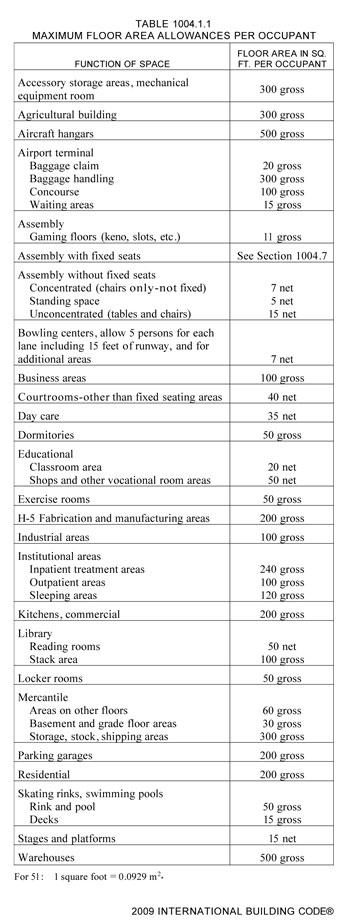
The International Building Code (IBC) is a set of regulations and standards that govern the design and construction of buildings in the United States. The IBC has established occupancy load requirements that limit the number of people allowed in a building or a specific area of a building at any given time. These requirements are based on factors such as the size and use of the building, as well as the number and type of exits available.
What is Occupancy Load?

Occupancy load is the maximum number of people that can be safely accommodated in a building or a specific area of a building at any given time. It is calculated based on the size and use of the building, as well as the number and type of exits available. The purpose of occupancy load requirements is to ensure the safety of the building's occupants in the event of an emergency.
How is Occupancy Load Calculated?

The occupancy load calculation takes into account the square footage of the area in question, the type of occupancy, and the number and location of exits. The IBC provides specific formulas for calculating occupancy load based on different types of buildings and uses. For example, the occupancy load for a restaurant is calculated differently than the occupancy load for a nightclub.
Factors that Affect Occupancy Load
Several factors can affect occupancy load, including the size and layout of the building, the type of occupancy, the number and location of exits, and the availability of fire protection systems. For example, a building with a large open floor plan may have a higher occupancy load than a building with many small rooms.
Why is Occupancy Load Important?

Occupancy load is important because it helps ensure the safety of the building's occupants in the event of an emergency, such as a fire or other hazard. By limiting the number of people in a building or specific area of a building, the risk of injury or death is reduced. In addition, occupancy load requirements help ensure that buildings are constructed and designed in a way that meets certain safety standards.
How is Occupancy Load Enforced?

Occupancy load requirements are enforced by local building inspectors and fire marshals. These officials are responsible for ensuring that buildings in their jurisdiction meet the requirements set forth by the IBC. If a building is found to be in violation of occupancy load requirements, the owner may be required to make changes or face fines or other penalties.
Occupancy Load Signs

Occupancy load signs are posted in buildings to indicate the maximum number of people allowed in a specific area. These signs are required by law and must be prominently displayed in a location that is visible to the occupants of the building. The signs typically include the maximum occupancy load, the type of occupancy, and the number of exits available.
Conclusion
Occupancy load requirements are an important aspect of building design and construction. By limiting the number of people allowed in a building or specific area of a building, the risk of injury or death in the event of an emergency is reduced. Local building inspectors and fire marshals are responsible for enforcing occupancy load requirements, and building owners are required to post occupancy load signs in visible locations. Understanding occupancy load requirements is essential for ensuring the safety of building occupants.